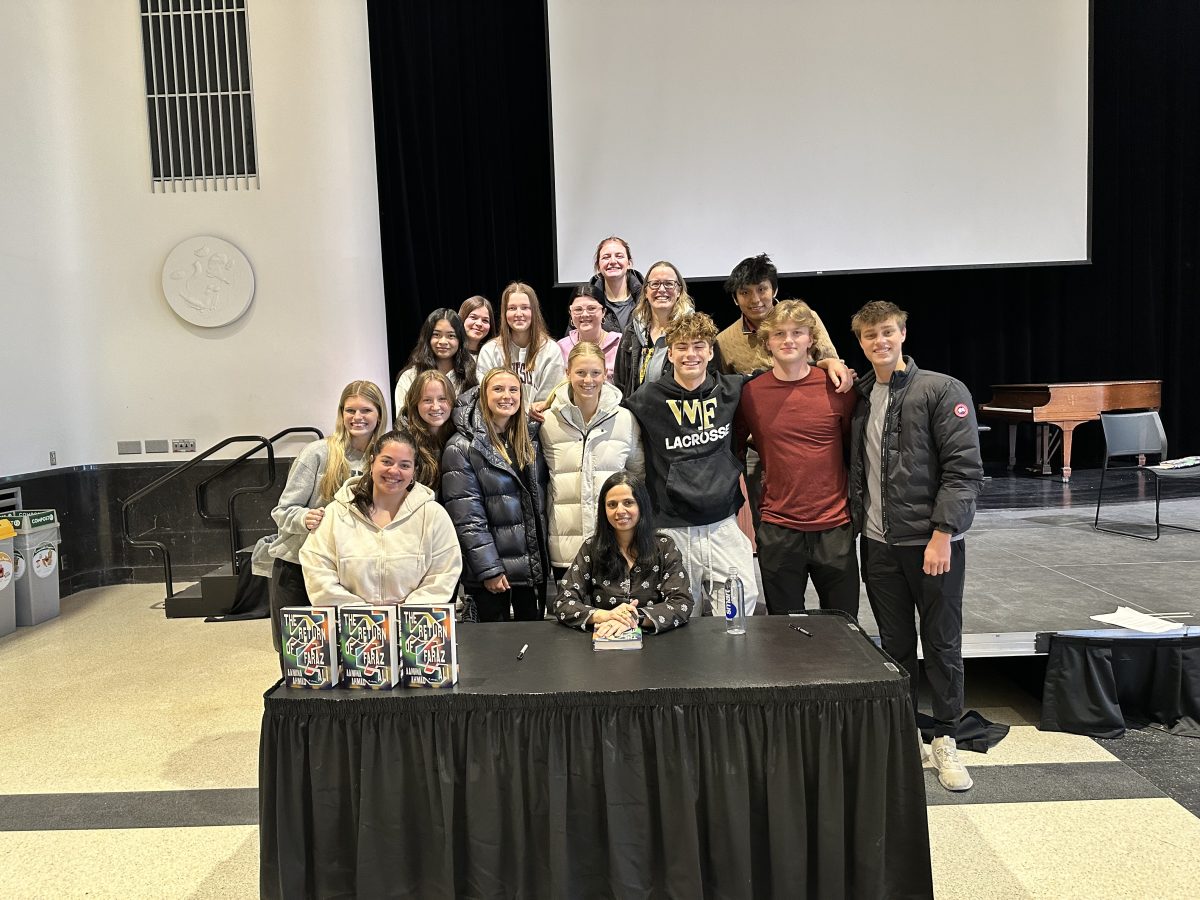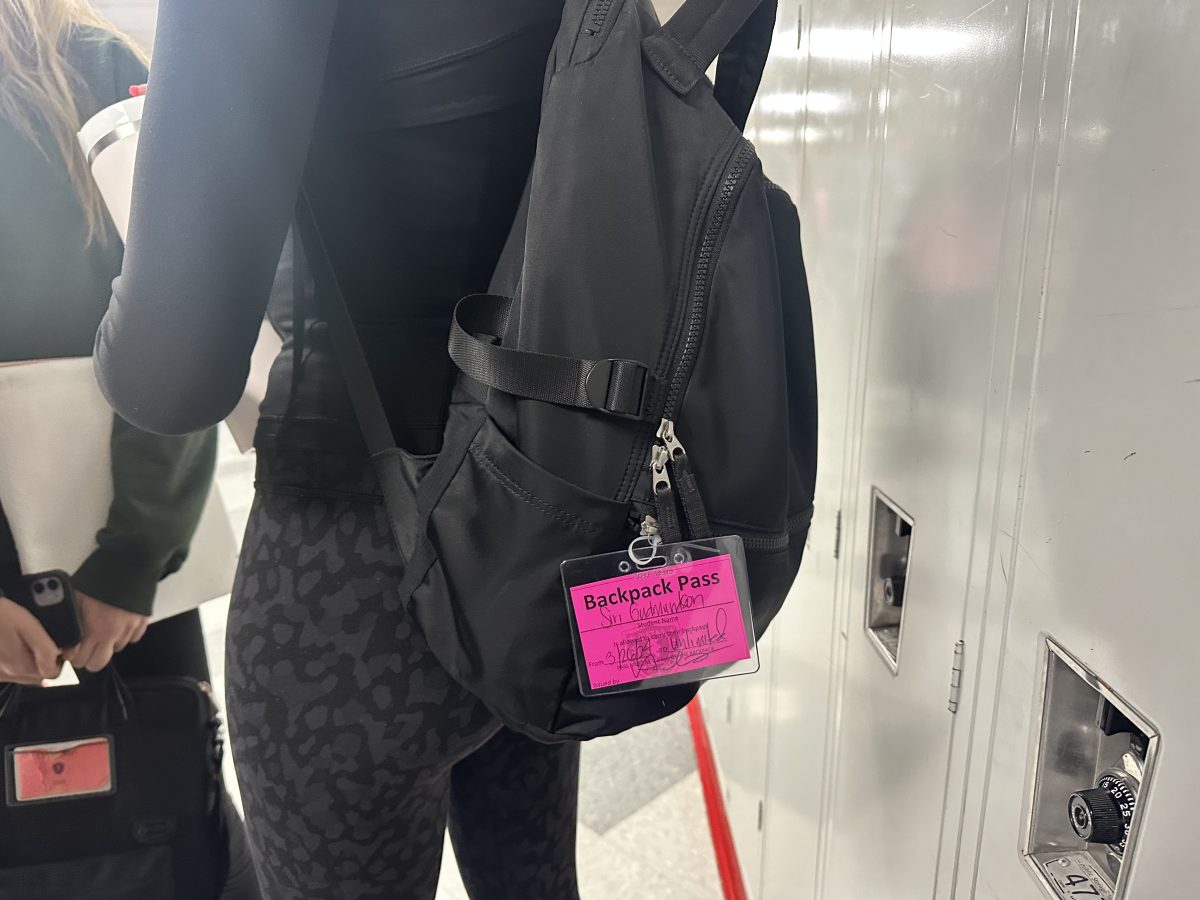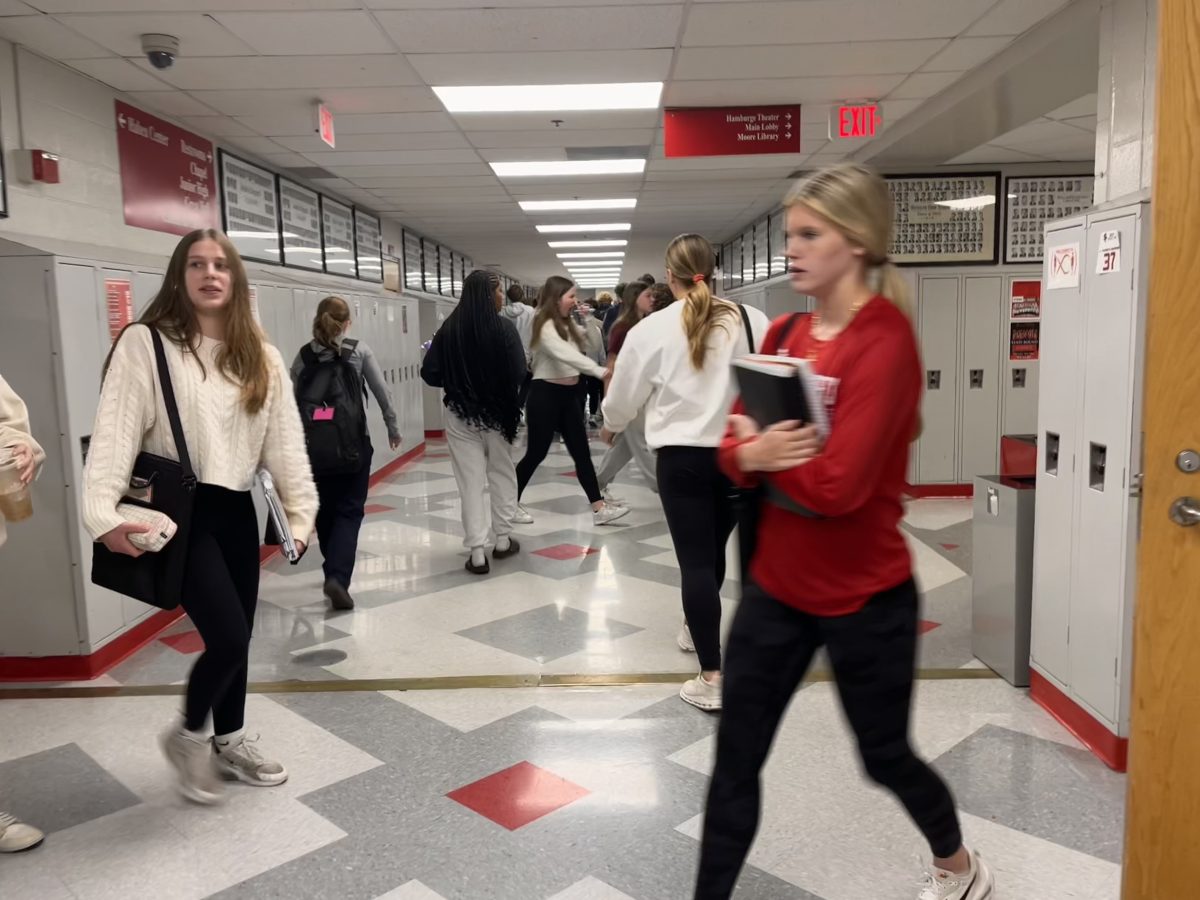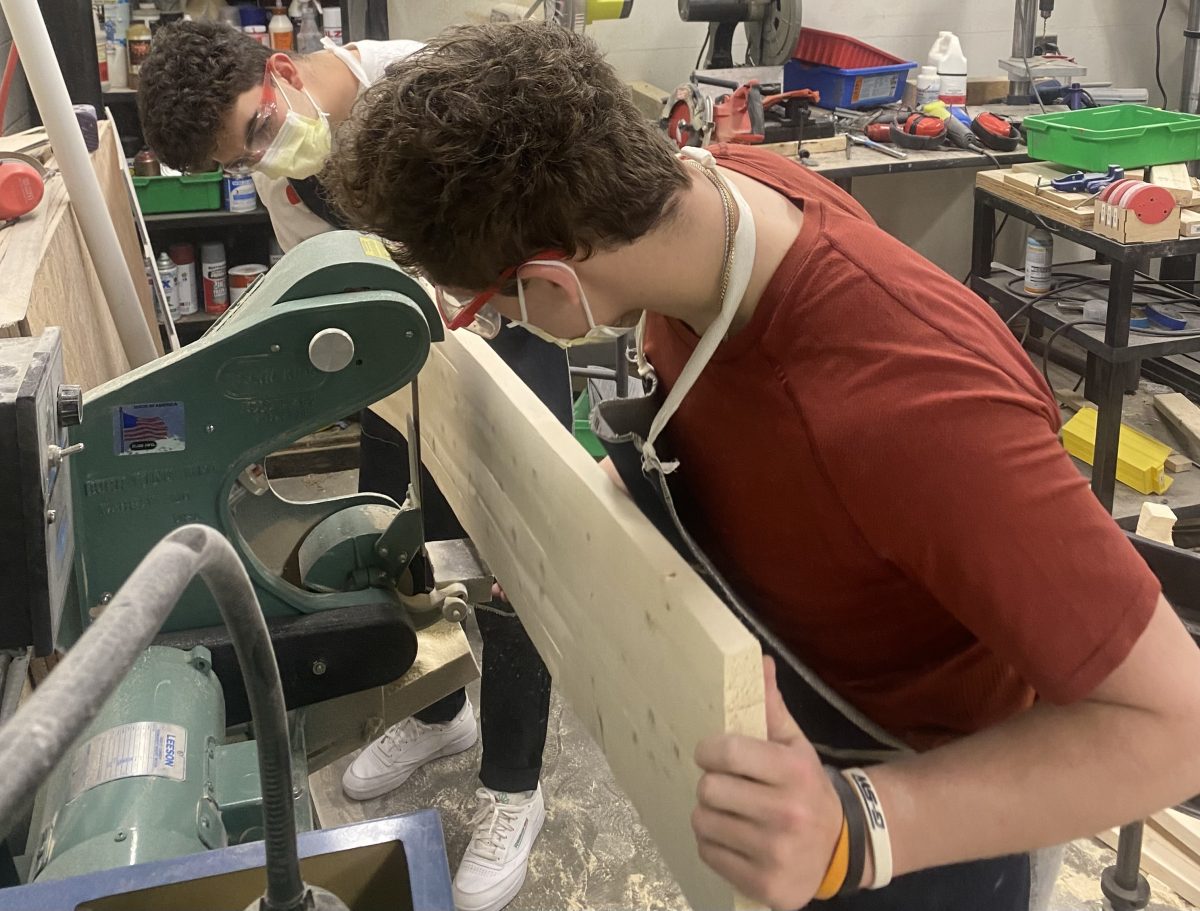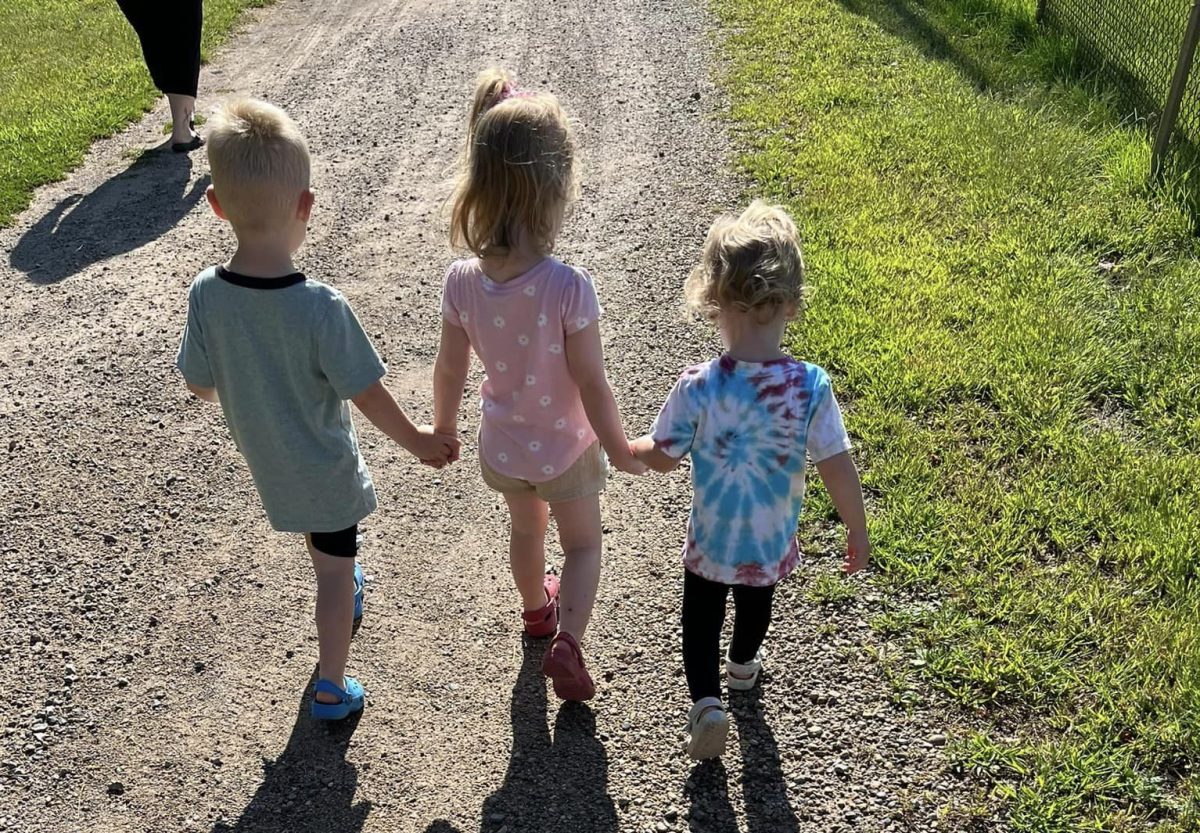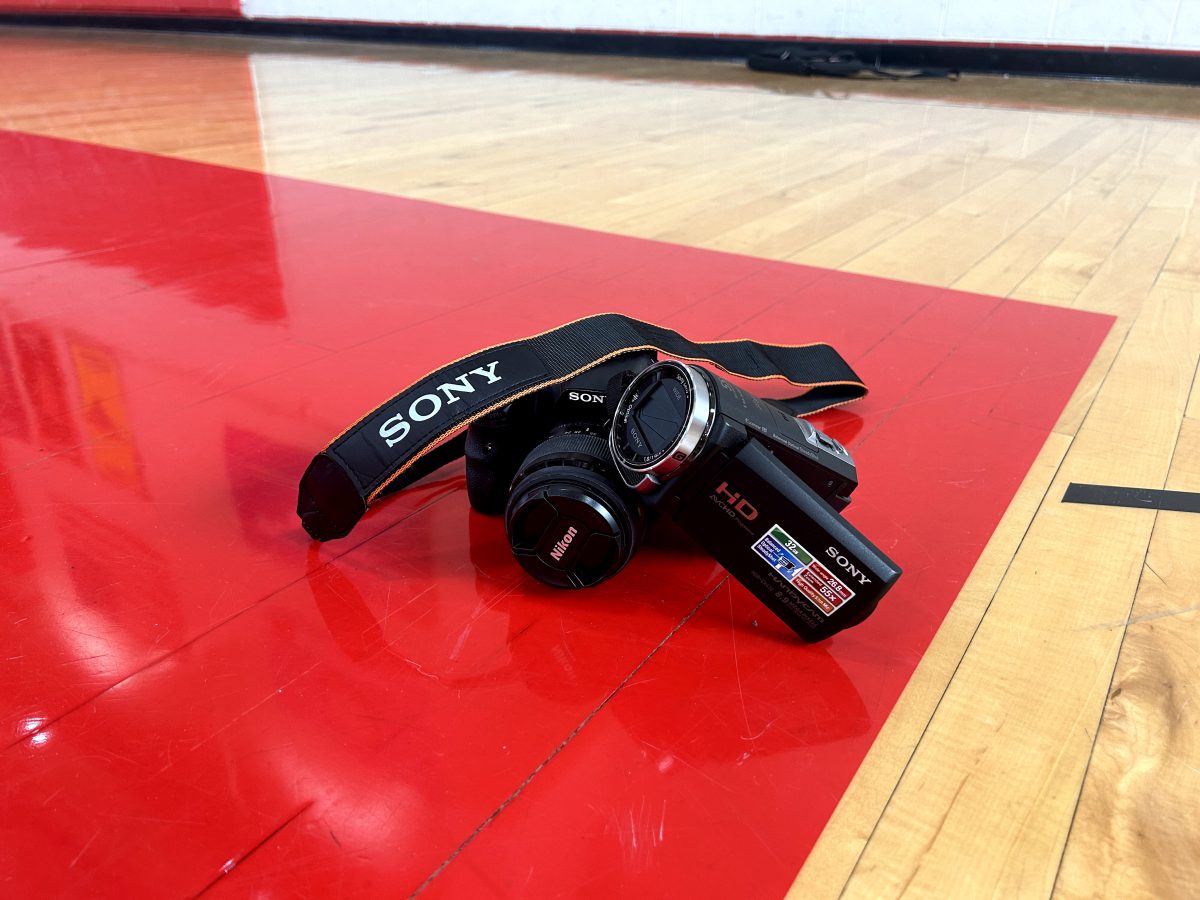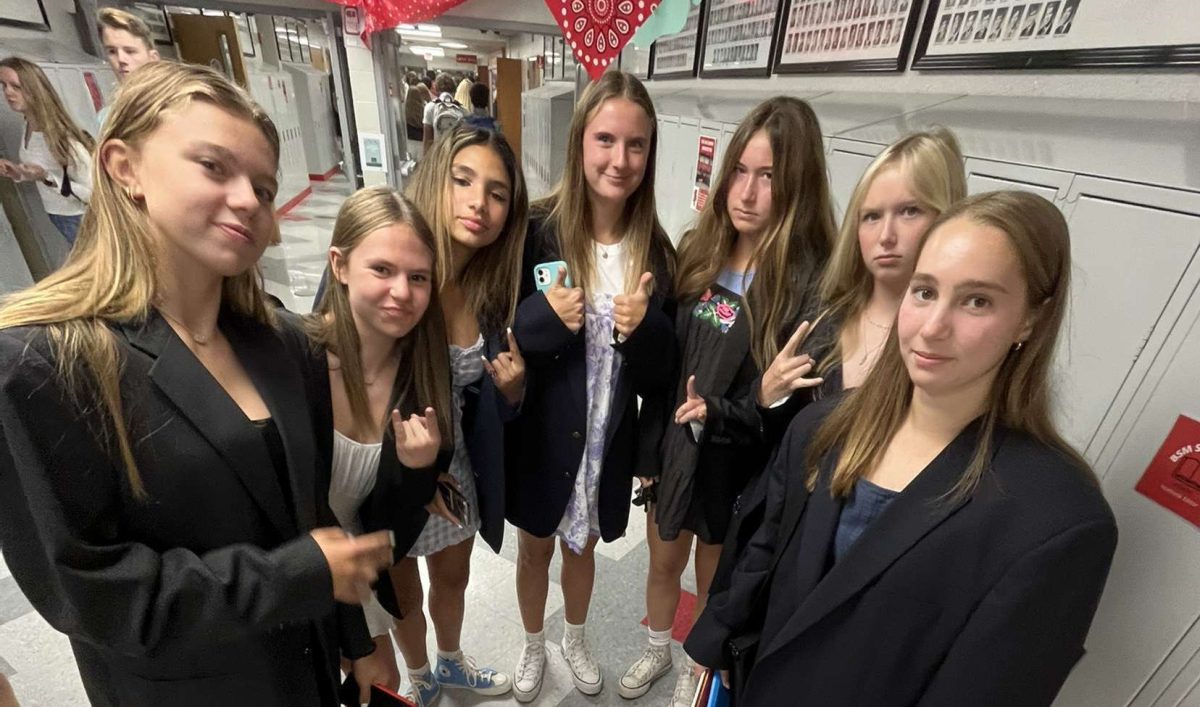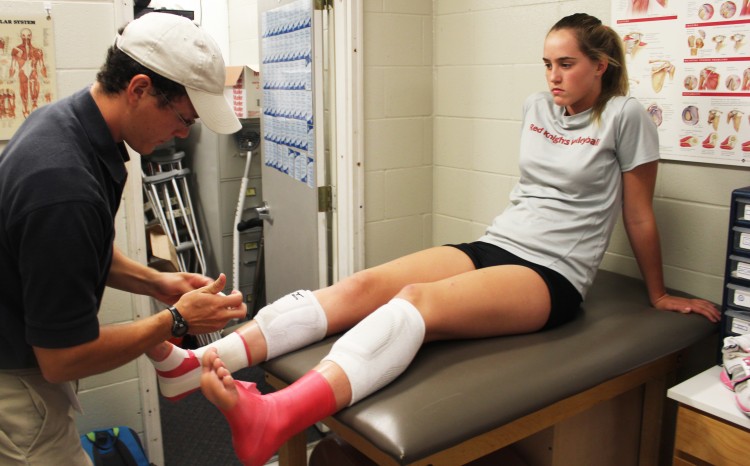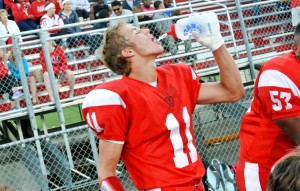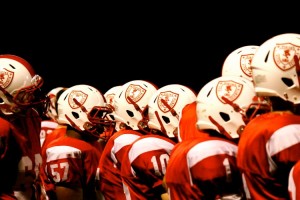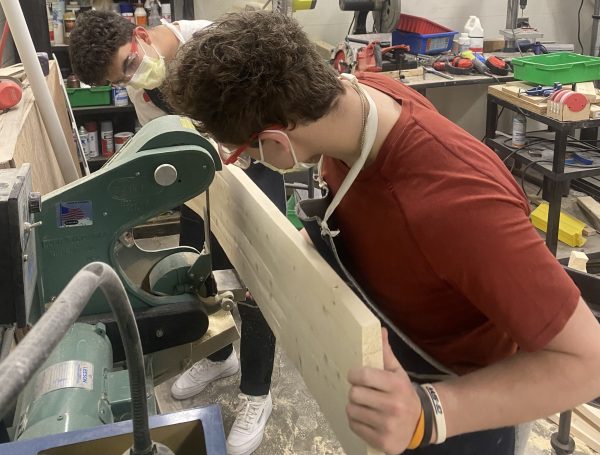Student athletes face harms of ignoring past injuries
Volleyball player Mary Kate Sipes gets help from the BSM trainer Brett Shultz to wrap her injury due to overuse.
It was the third quarter of the DeLaSalle football game. Junior Shea Maze had been wanting to play in the game for the whole season. His mild concussion would not hold him back from playing that day; he was ready to push through and would not let his injury stop him. He made it through the third quarter of the game, but by the beginning of the fourth, the juniorwas physically unable to stand. He would soon find out that his once mild concussion had grown into a head injury that would stop from playing for the rest of the season.
In high school, sporting activities become a part of many students’ lives, and with these rigorous athletic events come unavoidable injuries.
Many minor injuries can be healed with simple rest; however, others are potentially more serious. Injuries such as concussions or spine injuries take much longer to heal, and can also cause long-time damage. “My dad doesn’t want me to play football ever again because of my recent concussion. I wanted to play in college, but that isn’t really an option anymore,” junior Shea Maze said.
Concussions have been recognized, especially in football, as a major injury; however, most players tend to ignore them––or worse––play with them. “I knew that I had a mild concussion, but I really wanted to play in the DeLaSalle football game, so I told the trainer that I was fine. By the end of the game, I couldn’t even stand. My concussion is so much worse now than it would have been if I hadn’t played in that game. I gave up a whole season for just three extra quarters of playing time,” Maze said.
Coaches prefer players to not participate in sporting events while injured. “My coaches have been understanding of my concussion. They want me to play, but they know how dangerous it is,” Maze said.
Some players take injuries much less seriously than they should, but the problem with this is that players can have concussions without knowing they do, or begin playing before it is safe to do so. “Usually, I stay out of games when my injuries hurt, and go in when they don’t,” junior football player Nate Barry said.
Other than just on the field, concussions can affect tasks that players use in everyday life. “It took me two weeks before I could even start to think about doing my schoolwork again. I am very behind on all of my studies, because even trying to read a book can hurt my head,” Maze said.
Students suffer from multiple types of injuries, including spine fractures and leg injuries that are just as detrimental to health as head injuries. Junior Richmond Bowen tore his ACL during a football game, and couldn’t play for the rest of the season because of it. “I have been on crutches every day, and have to keep my knee elevated. I had to miss four and a half days of school because I tore my ACL. It’s been really hard on my season and my schoolwork,” Bowen said.
Senior Shannon McElroy, like many other students, only felt a minor pain when she first suspected a stess fracture in her back. However, this small pain caused her to sit out of volleyball during her whole season. After recovering through physical therapy, McElroy made the team during her junior year, but the pain reappeared. “I got checked out again, and it appeared that my injury hadn’t healed, so instead of playing my junior year, I wore a back brace for three months and was team manager,” McElroy said.

